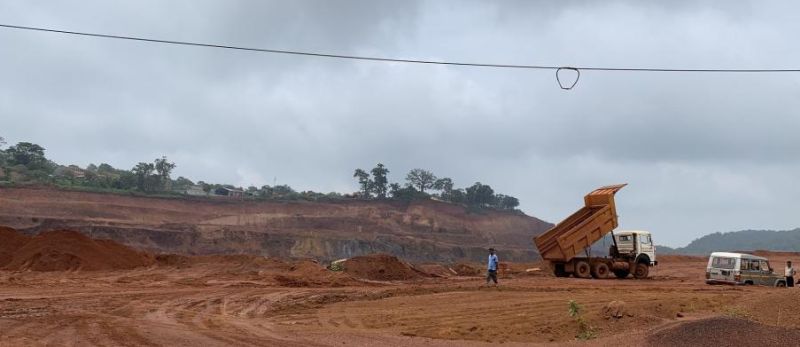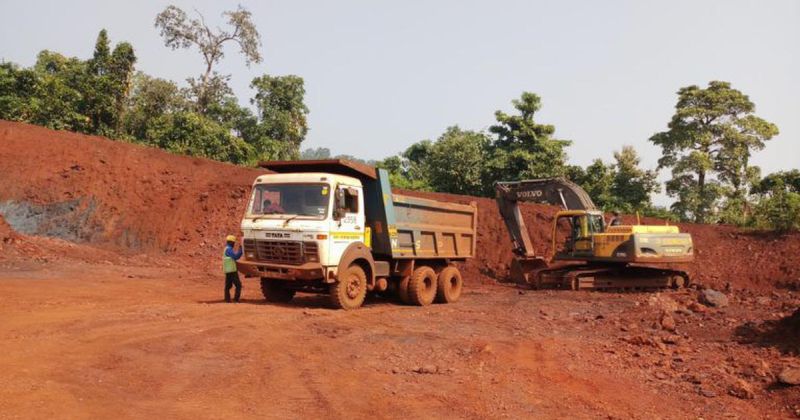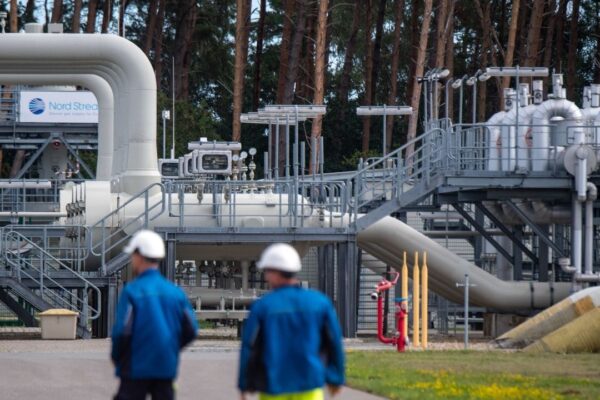Greed for Iron Ore Mining Devoured Three Wildlife Sanctuaries in Jharkhand
The madness to extract natural resources in order to increase the anthropogenic activities has taken a toll on wildlife. Tribals in the state of Jharkhand, India, have been waging a long battle to stop the mining activity in the mineral-rich state as it has adversely affected their environment and livelihood. Evidently, the consecutive governments have chosen to support corporate interests over the last few decades.
The west Singbhum district in Jharkhand has an abundance of iron ore reserves. However, the iron ore mining in the region has devastated the natural wildlife. Areas now hollowed out and turned into opencast iron ore mines in the state were once wildlife sanctuaries, sheltering many species of flora and fauna.
The state government has cleverly wiped three wildlife sanctuaries off its records in iron ore-rich West Singbhum district. These are Sasangda-buru in Saranda forest division, Bamiaburu in Kolhan forest division and Songra or Tebo in Porahat division.

Iron ore mines have hollowed out the earth where wildlife sanctuaries were supposed to be / Image: Ishan Kukreti
This work was executed so meticulously that there are no records of these sanctuaries after 1965. They have been mentioned in a report prepared by the now-defunct Indian Board for Wildlife on November 24, 1965, for a delegation of the International Union for Conservation of Nature.
The report mentions that Bihar (undivided) has the seven protected areas – two national parks and five sanctuaries including the three mentioned above. The sanctuaries are mentioned in the Indian Forest Records: Glossary of terms used in nature conservation and wildlife management as well, which was published by Forest Research Institute in 1970.
Also Read: Uranium Mining in Nallamala Hills Poses Threat to Amrabad Tiger Reserve
While Bamiaburu sanctuary was created in 1932, the other two were created in 1936. But the two of the sanctuaries – Bamiaburu and Songra, vanished off the records from the day the Wildlife Protection Act, 1972, was enacted.
The entire Saranda area was meant to be made into a wildlife sanctuary to protect the livelihood of tribes in the forests and their natural resources. Experts noted that acquiring land for mining activity would have been difficult had the government not eliminated the three sanctuaries from the official records.
The Act says sanctuaries notified before its promulgation will be deemed to be sanctuaries.
Says MK Ranjitsinh, retired government official, who was the principal author of the Act.
And yet, none of the governmental documents published after the Act mention Bamiaburu and Songra sanctuaries. Sasangda-buru was, however, last mentioned in the working plan of the Saranda forest division for 1976-77 to 1995-96.
Karampada, where the sanctuary was supposed to be, has been devoured by 879-hectare iron ore mine of Steel Authority Indian Limited (SAIL).
A 2016 study by Wildlife Institute of India (WII) discovered that once adored with over 300 plant species, now the Saranda forest only had 87 left. Although the 2010 census recorded 253 elephants, the WII could not spot a single elephant in the area.

Three wildlife sanctuaries were wiped off the records for iron ore mining in Jharkhand / Image: Gurvinder Singh/Mongabay
The 1965 IBWL report stated that elephants have benefited from the Sasangda-buru sanctuary, which could have become one of the country’s best sanctuaries with proper management.
But, blinded by greed, the government didn’t think about the pristine forests that could have been there and brutally mutilated the Saranda’s landscape.
But the whole area has been leased out to the National Minerals Development Corporation for the extraction and export of iron ore. This has played havoc with the sanctuary, and for all practical purposes it can be written off.
Report added.
The impact of mining is evident on the forest cover which is declining rapidly. Singbhum district also has the highest rate of land degradation in the state and human interference is the only sole cause.
On December 4, 2006, the Jharkhand High Court observed that all projects located within 10 km from the boundary of a sanctuary will need permissions from the National Board for Wildlife (which replaced IBWL in 2003) if its ecosensitive zone is not notified under the Environment Protection Act, 1986. However, since details about the sanctuaries are extremely sketchy, mining activity in the area has continued without any checks.
According to the Indian Bureau of Mines inventory, the huge money churning business of mining in Jharkhand contributed nearly 11 percent of India’s iron ore production in January 2019.
This figure was substantially higher till 2013 when the Centre appointed the Justice Shah Committee to keep check of illegal mining. The committee report in 2014 prompted the closing of several illegal mines in the area.
Heeding its recommendation, the Union Ministry of Environment, Forest and Climate Change stopped giving fresh mining clearances in 2014 in Saranda till the Management Plan for Sustainable Mining (MPSM) was created.
The ministry released MPSM in June 2018, under which nearly 80 percent of the forest was declared as a no-mining zone. Soon, the state government started putting pressure on the Union Ministry to revoke the no-mining zone as several companies had mining interest in the area. And surprisingly, the Centre has formed a committee to reassess the MPSM.
For decades, the mining activity has been aided by people across party lines and governments. The forest rights are being denied in the process and no land titles are being given.
This seems a clandestine scheme of the government to take sanctuaries off the records to make the process of corporate acquisition much easier for the big corporate companies.
Via: Down To Earth


